The term "outsider art" was first used by art historian Roger Cardinal in 1972 to loop together art made by people living with certain disabilities, as well as those living on the outskirts of society. Unlike most other art movements, outsider artists don't have much in common besides straying from the norm. They work in different media, throughout different times and places, without shared assumptions or aesthetic styles.
In fact, most outsider artists have or had no idea they would be categorized as such -- or even that their art would be seen by someone other than themselves. Therein lies the conundrum -- is a celebration of outsider art redemptive tribute or exploitation?
In "How to Look at Outsider Art," Lyle Rexer defines the tricky genre as "the work of people who are institutionalized or psychologically compromised according to standard clinical norms." This definition was amended to include those enduring an altered state of consciousness -- whether from marginalization or incarceration. "Self-taught art" is a category that often overlaps with outsider art, referencing artwork made without schooling that strays from the norms and styles of the time.
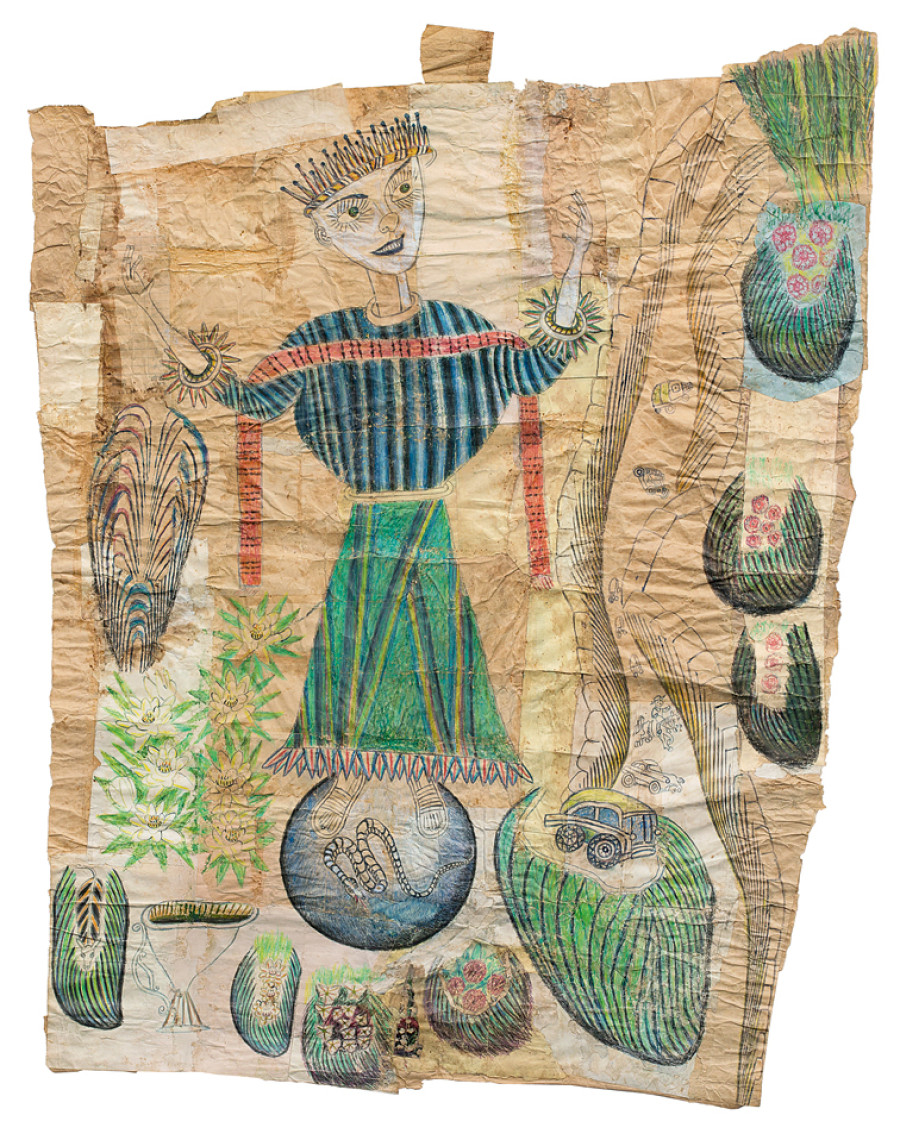
Martin Ramirez "Madonna" circa 1950, crayon, pencil on paper, with colage, 119 x 89 cm, ABCD Collection / Paris
Although the term "outsider art" is relatively recent, many artworks we now consider "outsider" date back much further. Outsider artworks are often extreme, obsessive, raw and bizarre. Rather than depicting the world around them, outsider artists tend to render worlds of their own, using art to provide the order, comfort or beauty their lives often lack. While each outsider artist works in a radically different mode, all outsider artists create art that seemingly emerges outside of time, space and history, at least outside the dimensions occupied by most humans.
Below we've compiled a primer on outsider art, providing an introduction to 10 crucial outsider and self-taught artists from the past century. We're using the Charles Russell's wonderful (and sadly out of print) book "Groundwaters" as a guide. Behold, 10 artists who use expression and imagination to conjure new realities.
1. Adolf Wölfli
"Pulsating with organic life, his patterning--which employs everything from clock hands and buildings to snails and birds--is evocative of musculature one minute, an illuminated manuscript the next." -Kristine McKenna
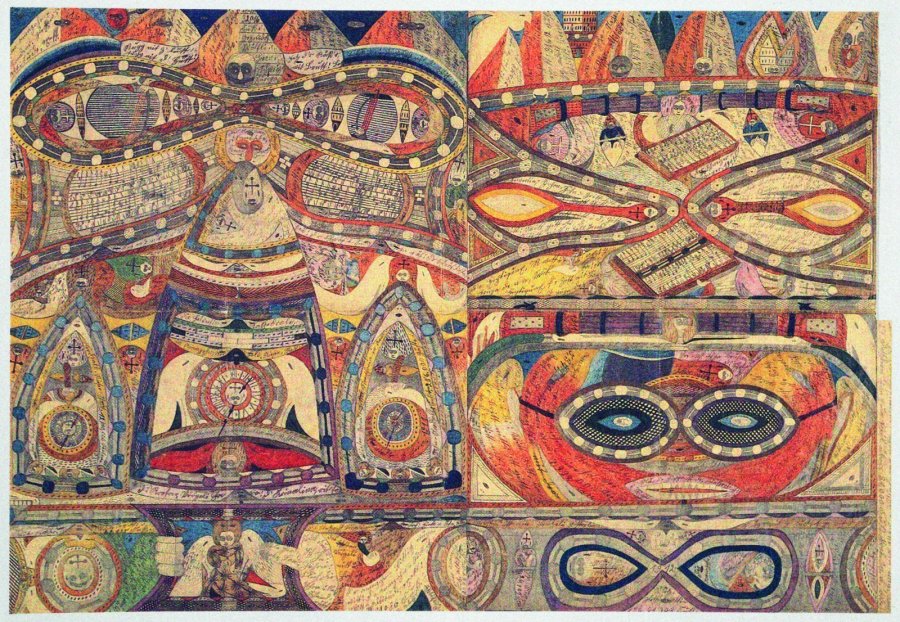
Wölfli was born in 1864 in rural Switzerland, the youngest of seven children. His father left when Wölfli was around five, leaving his family in extreme poverty. His mother passed away approximately three years later. Wölfli worked a variety of farming and labor jobs until, at the age of 26, he reportedly attempted to molest a 14-year-old girl. He was later imprisoned for allegedly molesting a 17-year-old and a three-and-a-half-year-old. He was eventually placed in an asylum where he was diagnosed with schizophrenia. He spent the rest of his life there.
Wölfli's work, however, would suggest little of his dark past. He crafts massive and obsessive labyrinths of information, ranging from numerical lists to musical compositions. He began drawing around four years after he was admitted to the Waldau Mental Asylum, and soon after became calmer in disposition and consumed by his work. The images transcend time and space, collapsing natural and unnatural forms into a flattened mass that attempts to "say everything in one word, something mystical and demonical."
2. Morris Hirshfield
"Compulsively fastidious, with [the works'] dense, even surfaces of bright colors, they have about them something of the formality and hieratic quality of Byzantine art, combined with a whimsy that may or may not have been intended but is charming all the same." -Michael Kimmelman
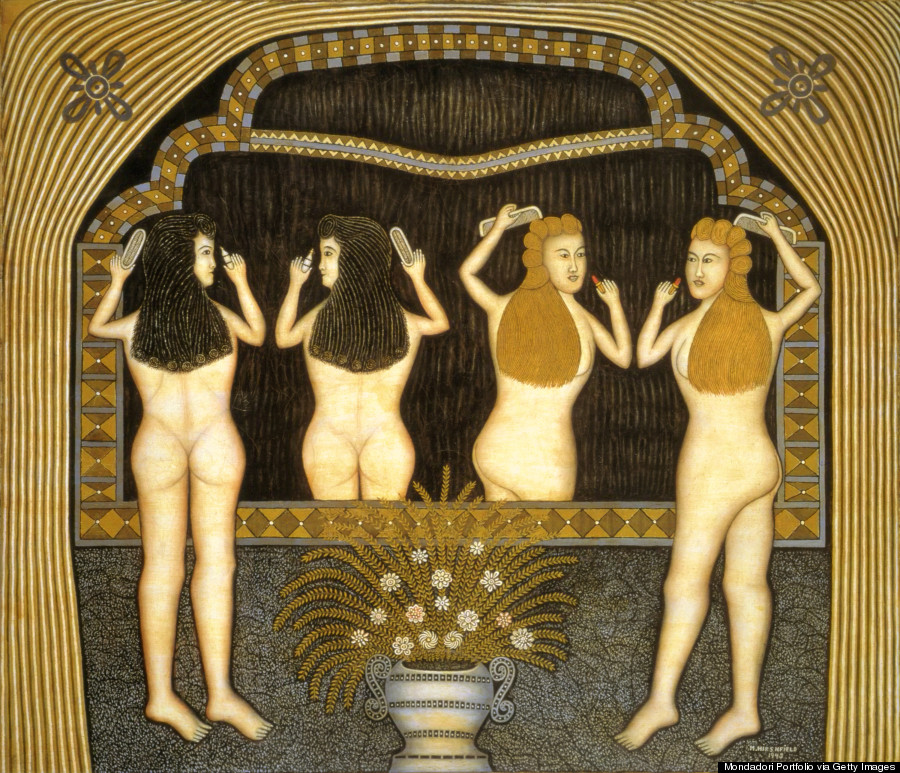
Hirshfield was born to a Lithuanian Jewish family in a small Polish town in 1872. His artistic talents were first recognized after a young Hirshfield created a sculpture for his synagogue. He moved to New York City at eighteen years old, eventually opening a successful slipper manufacturing factory with his brother. He was forced to retire due to health complications in 1935, at which point he truly delved into his art.
Hirshfield, a self-taught artist, created nudes, landscapes, portraits and still-lifes that attempted to follow academic artistic conventions yet resulted in a naive, unconventional style all his own. His two most prominent subjects are nude women and animals, both rendered in vivid detail and imaginative ornamentation, though lacking in traditionally rendered, three-dimensional depth. His interest in conventional themes and lack of conventional training led his work to land somewhere between kitsch and fine art. In the end, his inability to master techniques such as contours and shading yields singular artworks that hover somewhere between reality and myth, painting women who may also be idols.
3. Madge Gill
"Man directs his efforts in the trend of thoughts which scoop through the brain. The crust of the earth, beneath lies untold wealth, so it is with the mastermind true genius will out. Dear Louise, I wish I could be normal." -Madge Gill
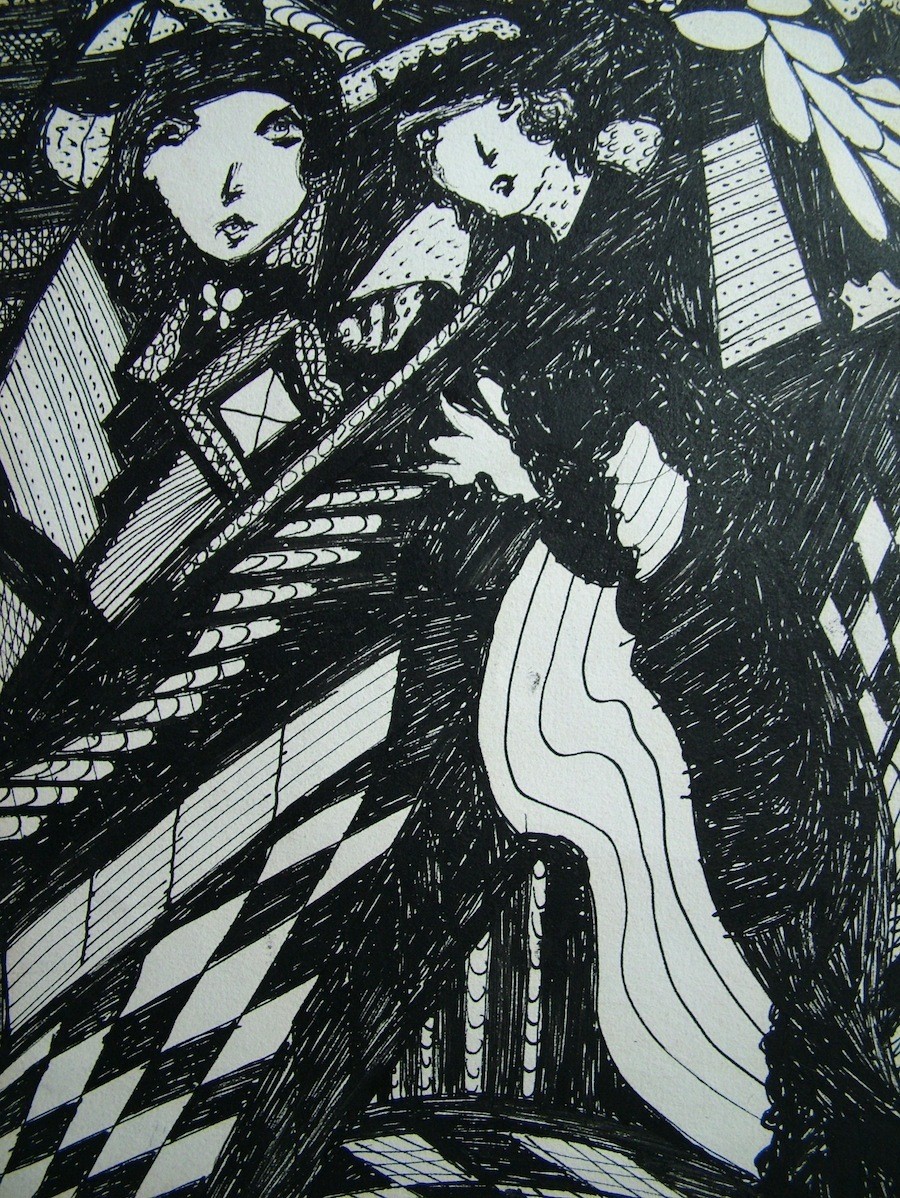
Image courtesy Vivienne Roberts
Gill was born in London in 1882 as an "illegitimate child," and as a result, her mother kept her hidden from public view for some time. At the age of seven Gill was sent to an orphanage in Canada, where she remained until age 19. She then lived with a widowed aunt in England who introduced her to spiritualism and astrology. She married her aunt's son and the two had three sons, one of whom died at age eight. When Gill delivered her first daughter, the child was still born. Gill became very ill, eventually losing her left eye, and as she recovered, she turned to art.
"I was definitely guided by an unseen force, though I could not say what its actual nature was," Gill said of her practice. Over time she entered into a trancelike state to create her drawings, always working alone and often late at night. Her cacophonous drawings render spinning visions of warped patterns and female faces, folding in on each other to create a patched-up reality. Filled with zig-zags and crosshatchings, the complex works seem to evoke an imaginary architecture that's been twisted and smushed -- like a far trippier cousin of M.C. Escher. The images depict a complex psychic state, some higher inspiration that arose from somewhere far beyond the material world.
4. Bill Traylor
"Traylor’s surfaces suggest an artist alive to every mark and line who placed his motifs with acute spatial wit. Especially in the more complicated scenes, this can make his unembellished backgrounds tilt and bend, as figures rush this way and that." -Roberta Smith
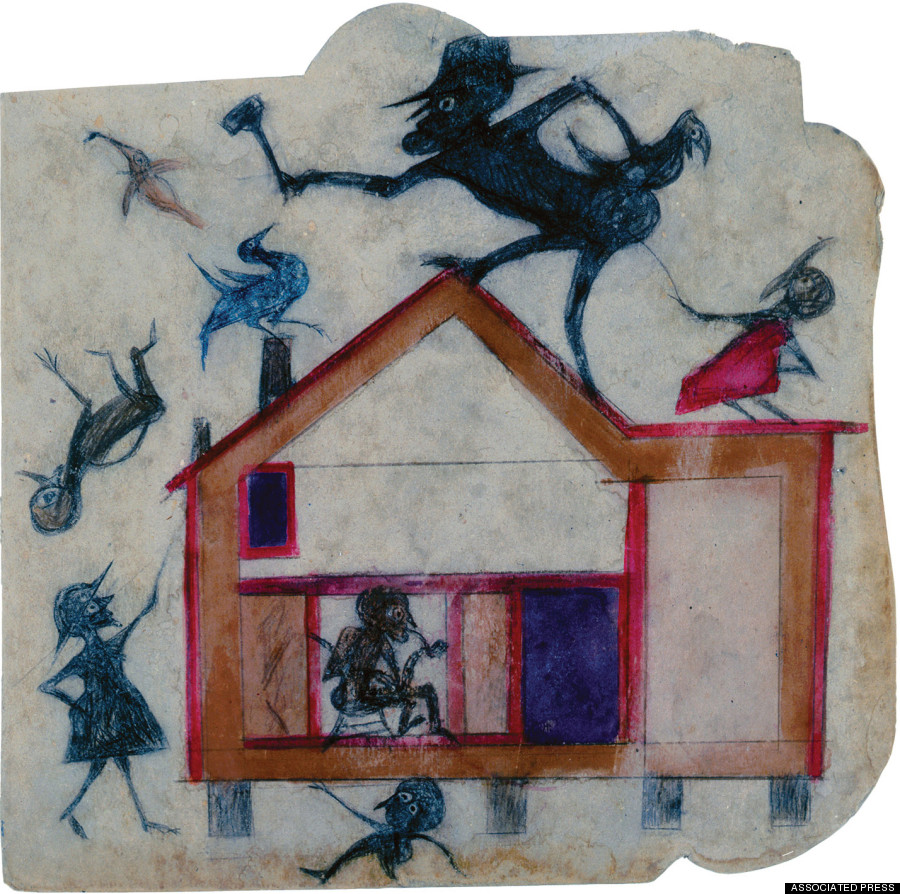
Traylor was most likely born around 1853. He was a slave on a cotton plantation in Benton, Alabama. After the Civil War, Traylor worked as a sharecropper and laborer for the Traylor family. By 77 years old, Traylor claimed to have fathered over 20 children, though he lived alone in a shack in Montgomery. Arthritis eventually forced Traylor to retire from his position as a shoemaker. In his eighties, Traylor was drawing on the street when a young, white artist named Charles Shannon noticed his work. Shannon supplied the then 85-year-old Traylor with supplies, and eventually acquired between 1,200 and 1,500 of Traylor's works.
Traylor's works are founded in realism, depicting mostly individuals or animals. Yet they employ a radical abstraction and simplicity that Shannon associated with the "African primitive." Little is known of Traylor's access to culture or of his artistic intentions, but his work came to represent a bourgeoning African modernism removed (and "saved") from dominant culture. Traylor's rough-edged drawings employ a bold use of uneven geometry that turns every human gesture into a mangled dance. His painted silhouettes capture a state somewhere between stillness and motion that never stops humming.
5. Aloïse Corbaz
"In her oeuvre, we observe an alienated creature ceaselessly projecting an imagined life through the repertoire of women idealized and scorned in our culture; we encounter a drama greater than that we might find in the theater she adored." -Charles Russell
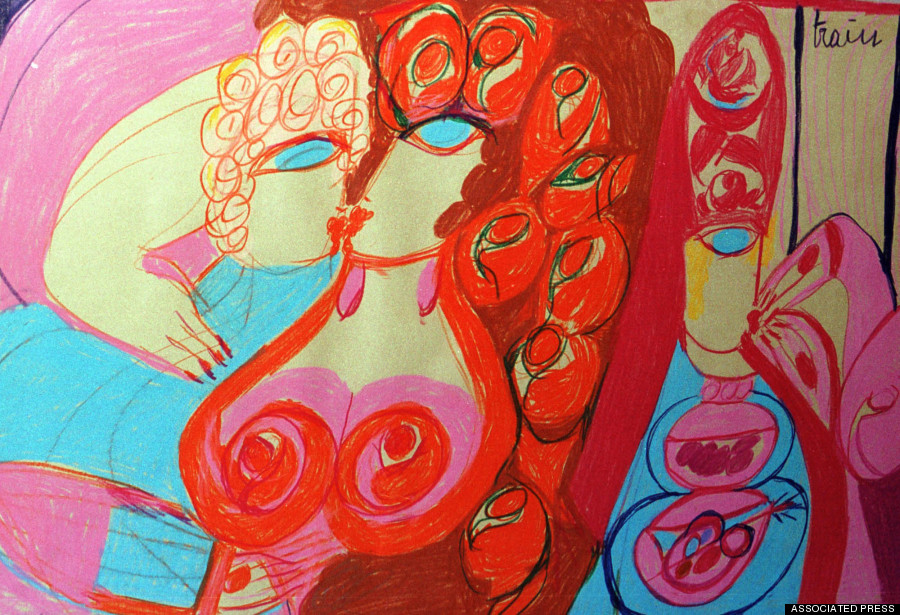
Corbaz was born in 1886 in Switzerland to a family of six children. She grew up dreaming of becoming an opera singer. After her mother passed away when Corbaz was 11, the young girl came under the harsh control of her older sister. At the age of 25 she became involved in a passionate affair with a defrocked priest and was subsequently sent away to Germany to become governess to a chaplain to the emperor. She then developed an imaginary attachment to the emperor and was forced to return home. Corbaz exhibited signs of mental collapse, including extreme pacifist views and erotic behaviors. She was committed to a psychiatric hospital in 1918. Once committed, Corbaz suffered a complete dissolution of self, comparing herself to an "extinguished Christmas tree." She eventually projected herself onto an imaginary cosmos that she herself created and documented in the form of art.
Corbaz created dizzying cosmologies dominated by feminine power. Luxury, eroticism and drama run thick throughout her visual universe, as depicted through gargantuan women in grandiose ensembles, pursed lips and hearty breasts. Even Corbaz's backdrops pulse with a sense of feminine over-abundance, from lush vegetal grounds to delicate and beastly birds. The women in Corbaz's world are both prey and predator, simultaneously eroticized objects of male desire and domineering, fearful forces in themselves. When men do make an appearance, their stature pales in comparison to the colossal women, which seem to proliferate madly and possibly infinitely.
6. Henry Darger
"'Which side are you on, Henry?' we find ourselves asking, only to imagine the anguished response, 'both, alternately! simultaneously!'" -Charles Russell
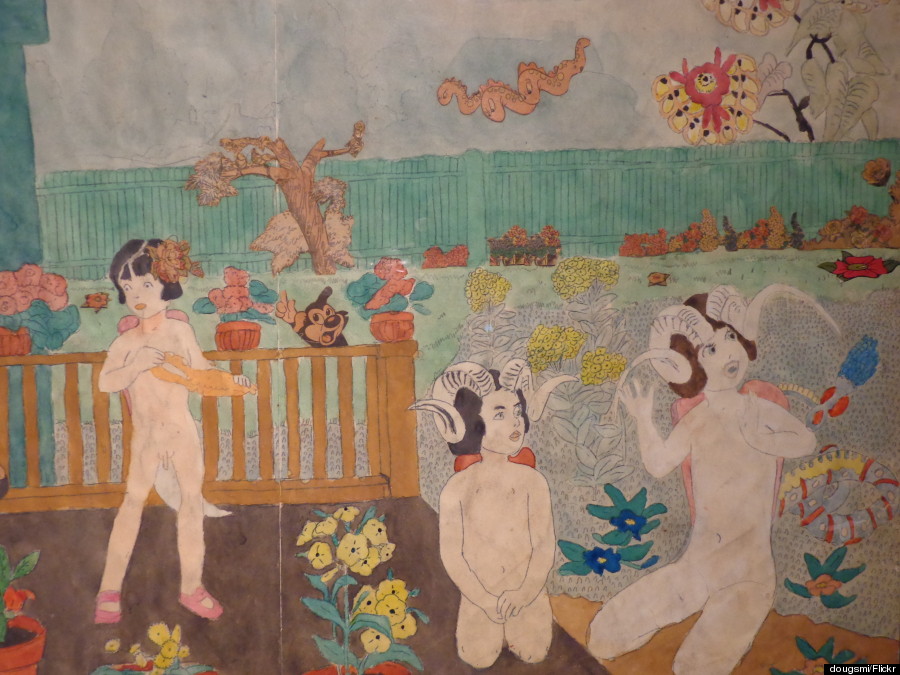
Darger was born in Chicago in 1892. When he was four years old his mother died giving birth to his younger sister, who was then given up for adoption right away. At age eight Darger too was put up for adoption by his father, who was too poor to provide for him. It wasn't long before he was committed to the Asylum for Feeble-Minded Children for his erratic behavior -- an institution known for abuse and neglect. Darger eventually escaped the asylum, settling into a series of menial jobs in Chicago and living alone in a one-and-a-half room apartment. He attended mass up to five times a day and had one close friend, with whom he formed a two-member club to protect young children. Darger's landlord discovered a trove of writings and paintings that he'd made throughout his life after Darger was sent to a nursing home later in life.
Darger's artworks, at first glance, don't look all too different from children's book illustrations, with panoramic pastel landscapes populated by cartoonish children. Yet look closer and you'll notice darker happenings are afoot, a realization made all the more blatant by his work titles, which include "At Sunbeam Creek: Are with little girl refugees in peril from forest fires. But escape this also, but half naked and in burned rags." Most of Darger's imagery is inspired by an unpublished 15,145-page book, titled In The Realms of the Unreal, detailing a war on an imaginary planet, plagued by evil rituals including child slavery and child torture. Because he thought he couldn't draw well, Darger cut out photos of figures and scenes which he'd collage onto his mushrooming narrative. The prolific images conjure good and evil, innocence and corruption, violence and tranquility in nightmarish detail, with Darger himself situated somewhere between the rigid values of religion and the wild terrain of the imagination.
7. Martín Ramírez
"Straight, curved, or angular, these tightly woven lines form intense schematics in every one of his pieces. They echo his memories of the churches’ striated marble, of working in the fields under the vibrations of the hot sun, of the rough-woven patterns in the ropes and baskets he carried in Mexico."-Caille Millner
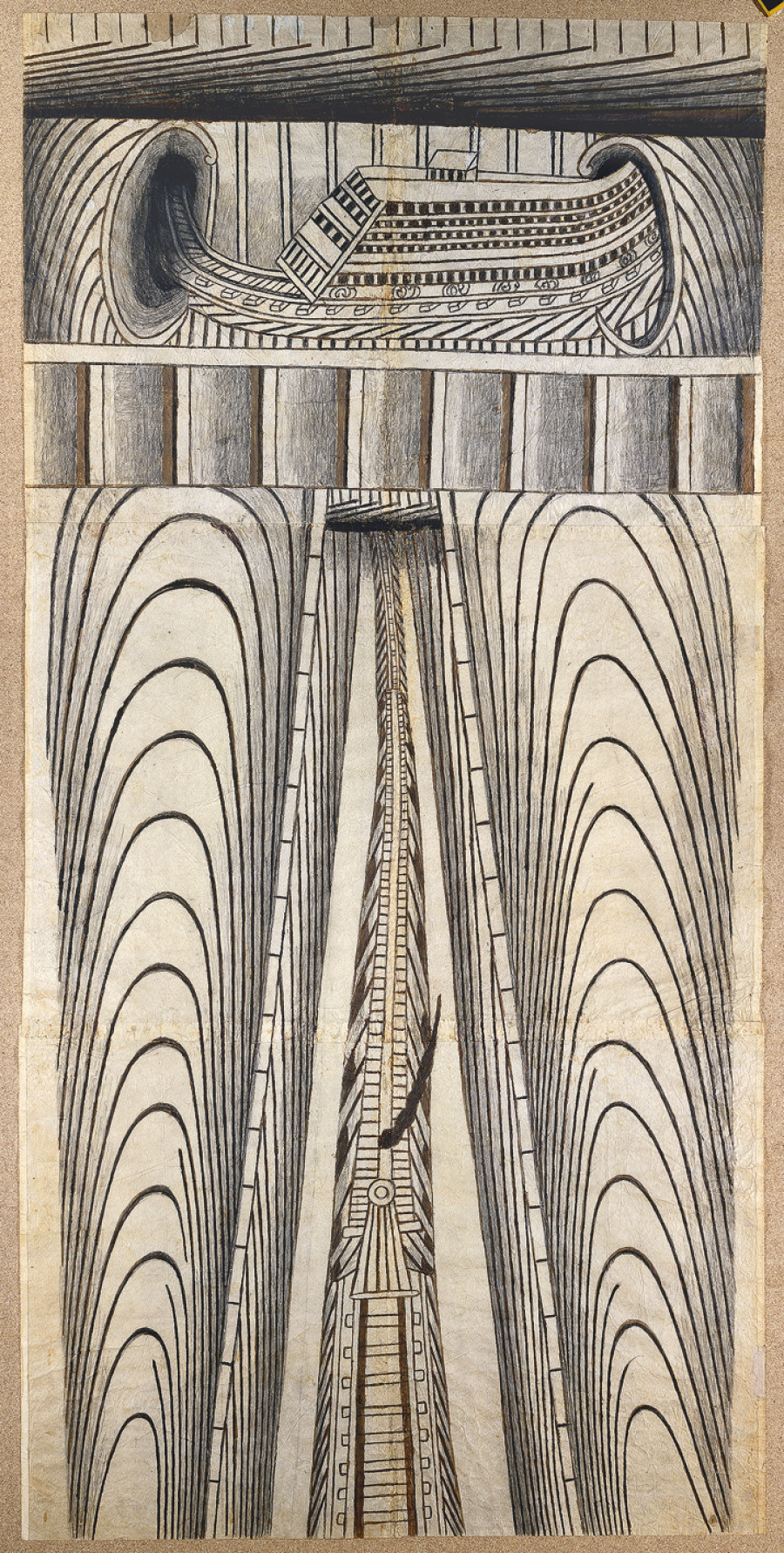
Martin Ramirez "Train" circa 1950, crayon, pencil on paper , 179 x 87 cm, ABCD Collection / Paris .
Ramírez was born in 1895 in west-central Mexico to a devoutly Catholic family. He worked as a sharecropper before acquiring a small ranch. He married in 1918 and traveled to California in 1925 to look for work, leaving his three daughters and pregnant wife at home. While there, a violent rebellion destroyed his farm back home and the Great Depression made life in the U.S. unbearable. Ramírez was picked up by the police while he was homeless and committed to an American psychiatric hospital. He was diagnosed with schizophrenia -- though it's been dubbed an alleged misdiagnosis -- and remained in a state hospital until his death. Throughout this time, Ramírez remained so quiet many thought he was mute. He did, however, communicate through improvised drawings he created and stored obsessively.
Ramírez began drawing on scraps of paper, envelopes, menus -- anything he could find. He made glue from potato starch, flour and saliva and used a tongue depressor to craft straight lines. The resulting works depict a visual realm of meticulous order and hypnotic repetition, in which interior and exterior spaces operate as vessels into the personal and psychological. The highly structured, geometric compositions allude both to architectural worlds and pure ornamentation -- both of which derive pleasure from the pure ritual of creating order. The images also integrate aspects of American and Mexican culture, including the charro, a traditional horseman originating in Ramírez's hometown. Yet any human or animal figure gets swallowed up in Ramírez's endless loops of parallel lines.
8. August Walla
"Walla was fascinated by the materiality of words and by their plastic, or three-dimensional quality as well as by symbols, and collected foreign-language dictionaries, from which he drew terms, and invented personal idioms by combining different words... His works were talismans to him against dangers—particularly against spirits, humans and death." -Musuem is Lausanne
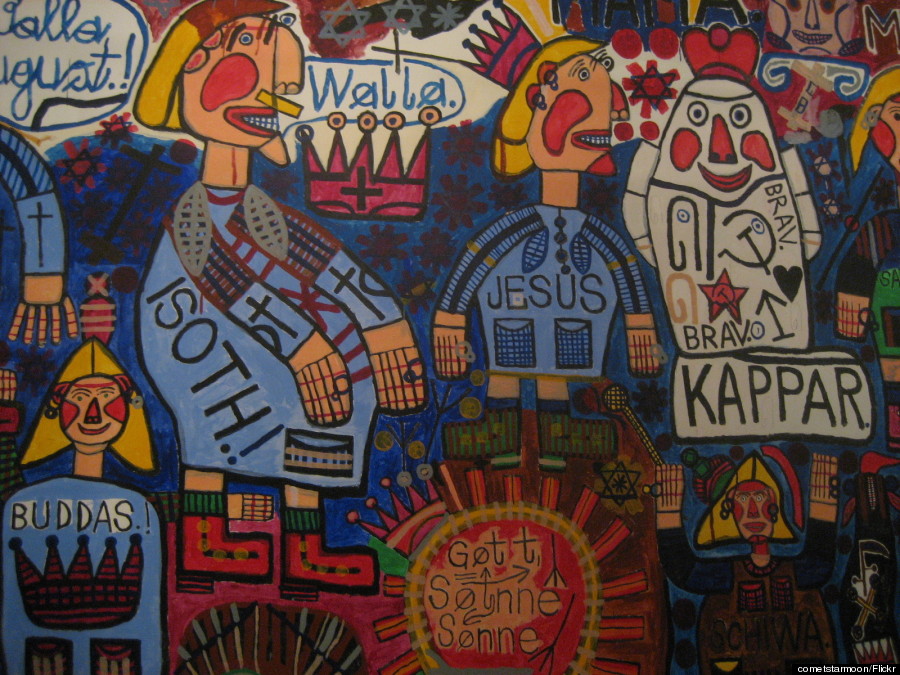
Walla was born in Klosterneuburg, Austria in 1936 to a forty-year-old mother and sixty-year-old father. Growing up, Walla was closest to his grandmother, even sharing a bed with her until she died when he was six. During the Nazi era Walla’s mother raised him as a girl, hoping to protect him from the draft. Walla was taken to clinics for potential mental disorders since the age of four, preventing Walla from attending public schools or voting. At 16 he was sent to a mental hospital for attempting to burn down his house and kill himself. As an outpatient, Walla developed an intense dependence on his mother, and she on him. Walla was sent back to a hospital when his mother was admitted for an operation, and it was then that his artwork was noticed by Dr. Leo Navratil. The doctor placed Walla in a "House of Artists" segment of the hospital where he was encouraged to create freely.
Walla's paintings are confrontational, exaggerated and loud, like flagrant billboards from another planet. They are also jam-packed with words and symbols, some legible and others inscrutable, conveying personal messages that can't help but get lost in translation. His bizarre and childlike forms reference religion, death, god, satan, his mother and himself -- often depicted phallus out, excreting semen or urine. In his studies of Walla's work, Dr. Navratil assessed his turbulent creations as attempts to understand the complex world that, due to an over-protective mother and his mental history, was kept hidden from him.
9. Nek Chand
"All the stones have a soul... They are alive... The stones are like gods and goddesses: there is life in them." -Nek Chand
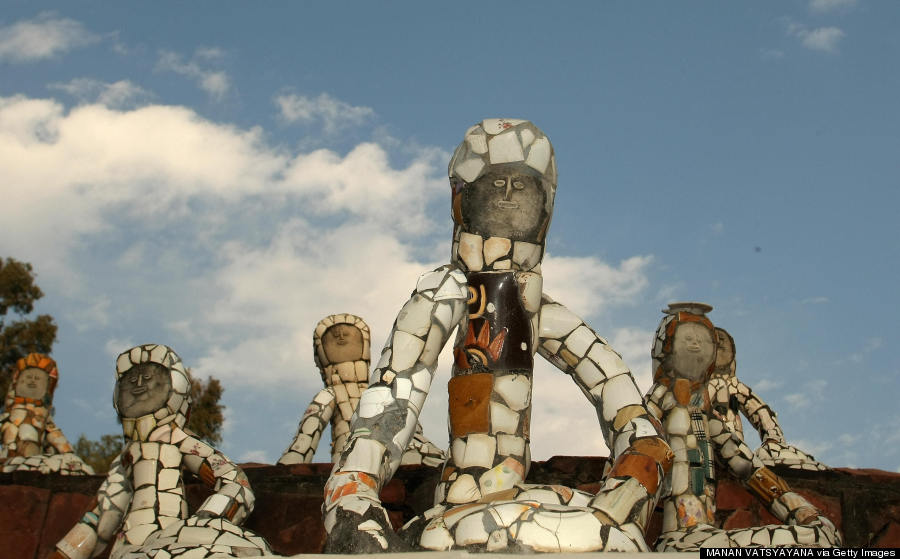
Chand was born in 1924 in a small village in Punjab, India. He worked as a farmer in his community until the 1947 partition of Pakistan and India, when Chand's Hindu family was forced to leave their belongings and relocate. After the move, Chand separated from his family and in 1954, he married and became a road inspector. Chand's duties put him in close proximity to the ruins and rubble of a quickly changing India. Le Corbusier was transforming the village of Chandigarh into a perfectly ordered space modeled off the West, but Chand was particularly attracted to what came before, particularly the weathered stones and rocks he encountered.
In 1958 Chand began collecting these stones, bringing them on his bicycle to a hidden locale he transformed into a magical space; his own private kingdom. For seven years Chand used rocks to build a secret world, along with materials gathered from abandoned hospitals and businesses. He formed statue after statue of his partially humanoid forms and their beautifully lopsided features. The 18-acre-site, which is now public, is a spiritual garden of recycled materials and childhood dreams. There are now 3,000 sculptures dispersed throughout the rock garden, not including the many rocks which, when admired carefully, contort to resemble the human face.
10. Michel Nedjar
"This is not the decay of a fruit or a rose, as in the vanitas still lifes of the Dutch 17th century; this is not even the decay of an animal, like a gull found dead on the shore. The poupées reflect the dereliction that underlies human existence: the fragility of the body of that which is intelligent, thinking and self-aware, and the fact that it will decompose and rot quickly, once the spirit has fled." -Katherine Lieber

Nedjar was born in 1947 in a village near Paris. His parents were Jews who had immigrated to France, and much of his family had been lost in the Holocaust. Nedjar had three brothers but preferred the company of his three sisters and spent much time making doll clothing with them. Although he had heard about the events of the Holocaust from members of his family, Nedjar was shocked when he watched Alain Resnais' "Night and Fog" on television. "I identified with the corpses. I felt the violence," he said. Nedjar later embarked on nomadic journeys through Africa, Asia and Central America, experimenting with various cultures and drugs. In the 1970s, during a bout of depression, he began making his poupées.
Poupées are Nedjar's peculiar breed of doll -- part cocoon, part fetus, part alien, part decaying roadkill, part nightmare. The shrunken creatures appear like bundles of fabric mixed with organic material that's been left out to rot. The ragged figures challenge our modes of categorization, lingering on the border between human and not, alive and dead, contained and oozing out. Nedjar stuffed, binded and sewed the sculptures by hand, with any blood lost on the way forever enmeshed in the resulting artworks. The artist recalled entering a sort of trance as he created his dolls -- at once echoes of his childhood, dark tributes to his family's past and visceral objects that defy meaning or origin.